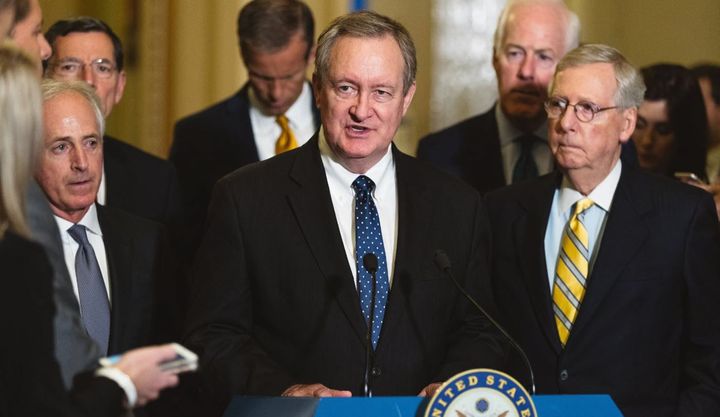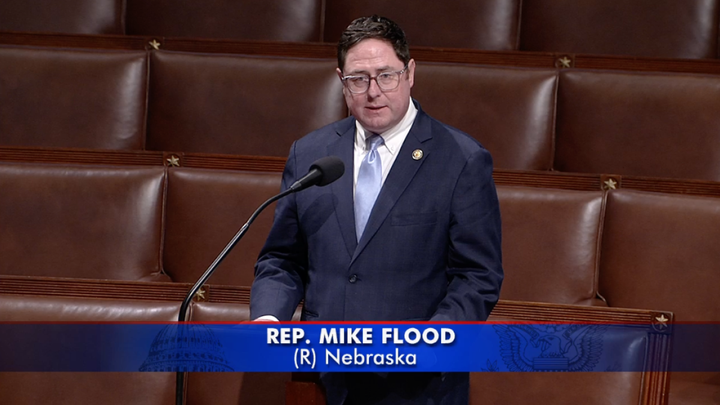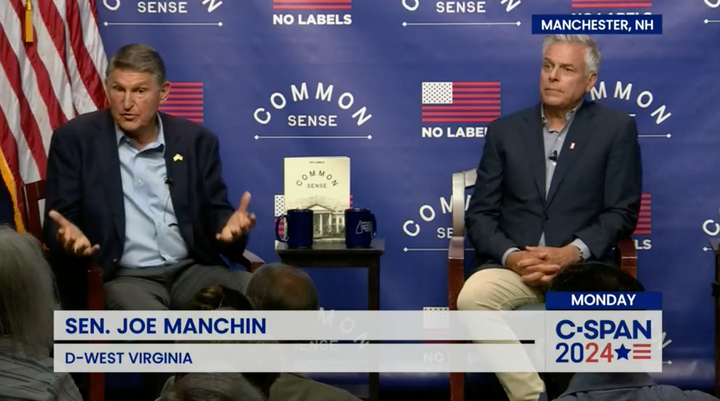The US Senate is about to pass its first major piece of bipartisan legislation this session of Congress, a package of measure to deregulate the banking industry.
Nearly every bank in the US will benefit, from community banks that will no longer be required to verify a mortgage borrower’s ability to repay, to megabanks like Citigroup that will be able to take on more risk because of a reduction in leverage requirements.
At the heart of the bill is a provision that raises the threshold beyond which banks are considered “systemically important financial institutions” (SIFIs) under the Dodd-Frank Act and thus face heightened regulatory standards. The threshold would be raised from its current level of $50 billion in combined assets to $250 billion, reducing the number of banks currently treated as systemically important by regulators from 44 to 13.
Several of the banks that would see reduced regulatory oversight took billions of dollars in bailout assistance from the government during the 2008 financial crisis, including SunTrust, Fifth Third Bank, and Zions Bankcorp. The nonpartisan Congressional Budget Office has determined that the bill will increase the risk that another financial crisis will occur. As a result, they estimate that it will increase the deficit by about $460 million over the next ten years.
Despite this, the bill has advanced in the Senate on a bipartisan vote of 67–32 and it is set to pass this week with bipartisan.
Clearly there is no mass movement pushing for Congress to let banks with hundreds of billions in assets take on more risk. In fact, Wall Street’s influence in D.C. has been one of the most potent narratives behind the anti-establishment sentiment that culminated in the election of President Trump. It’s one of the only issues that unites the populist wings of both parties.
So where did this idea to raise the SIFI threshold come from, and why is there so much momentum behind it in Congress?
The first organization to call for raising the threshold to $250 billion was the Bipartisan Policy Center (BPC), an influential DC “think tank” founded by several former high ranking members of Congress. In April, 2014, the BPC’s Financial Regulatory Reform Initiative’s Regulatory Architecture Task Force published a series of recommendations for revising Dodd-Frank that centered around this threshold increase. They argued that it would make the banking industry safer.
Having the BPC’s name on the plan gives it a patina of credibility and objectivity that it would not have if it came from a politician or an industry trade group. Its research and policy suggestions are treated by the media as coming from above and beyond the partisan fray, formulated by independent scholars, not lobbyists or political interests.
The BPC facilitates this image of itself, with everything from its name to its branding. Its website describes its policy solutions as “the product of informed deliberations by former elected and appointed officials, business and labor leaders, and academics and advocates who represent both ends of the political spectrum.”
But the BPC has strong financial ties to the banks that would benefit from its suggestion to raise the SIFI threshold to $250 billion. In fact, the organization grew closer to the banking industry at the same time that it was crafting its banking industry regulatory suggestions.
The BPC launched its Financial Regulatory Reform Initiative in 2012. That same year they recruited new major donors from the financial industry.
The American Bankers Association (ABA) — the banking industry’s chief trade group — and Citigroup became donors in 2012 according to the BPC’s 2012 year-end report. Neither the ABA nor Citigroup (or any other financial industry interest) are listed as donors on any prior BPC disclosures.
The exact amount of money the ABA and Citigroup gave to the BPC was not disclosed, but both were listed as elite-level “leadership council” donors.
As this new banking industry money was rolling in, the BPC was staffing up its newly formed Financial Regulatory Reform Initiative with lobbyists and lawyers who have deep ties to the banks.
For example, they recruited Rodgin Cohen, one of the nation’s top banking mergers and acquisitions lawyers, to join the initiative. Cohen has lobbied the government on behalf of banks like Wachovia, Bank of New York Mellon Co, and Goldman Sachs. In 2009 Cohen said during a panel that he didn’t see much need for reform in the wake of the financial crisis. “The system will look more like what preceded the current environment than many people seem to believe, ” he said. “I am far from convinced there was something inherently wrong with the system.”
Another recruit, John Dugan, has lobbied for Bank One Corp, the Financial Services Coordinating Council, the American Bankers Association, and other financial industry interests. He’s well known as the originator of a series of financial industry policies that were adopted as part of the deregulatory boom in the industry during the 1990s. His claim to fame is calling for a repeal of the Glass-Steagall Act as a Treasury Department official in the George H. W. Bush administration. His so-called “Green Book” of banking industry policies was the first time that repealing Glass-Steagall was published as part of an official policy platform of an administration.
Randall Guynn, another of the experts recruited by the BPC, is a partner at DavisPolk, a powerful law firm that counts all of the biggest banks as clients. According to their website, Guynn “focuses on providing strategic bank regulatory advice and advising on M&A and capital markets transactions when the target or issuer is a banking organization or other financial institution.” Guynn has also registered to lobby Congress on behalf of the Securities Industry and Financial Markets Association (SIFMA), an industry trade group that represents banking and financial interests from around the world.
As the BPC’s Financial Regulatory Reform Initiative worked on crafting banking policy proposals, the BPC’s financial ties to the banks grew even deeper. By 2014 the BPC counted not only the ABA and Citigroup as donors, but also Bank of America, Goldman Sachs, Financial Services Roundtable, PNC Financial, State Street, and other financial industry interests.
The BPC has spent more than $1 million each year since 2012 on lobbying the federal government to promote their policies. Many of the lobbyists hired by the BPC have personal ties to powerful members of Congress, including Billy Piper, former Deputy Chief of Staff to Senate Majority Leader Mitch McConnell, and Shelby Hagenauer, former Legislative Director to House Majority Leader Kevin McCarthy.
In 2017 the BPC reported lobbying on S. 2155, the banking deregulation bill currently before the Senate that includes their provision to raise the SIFI threshold to $250 billion.
As the senators backing this bill make their final push, they’re highlighting its bipartisan nature and its origins in an orderly and collaborative legislative process.
“The bill is the product of robust, bipartisan negotiations,” Sen. Crapo said on the Senate floor. “It is the outgrowth of the feedback and input garnered from a process we initiated in the Banking Committee, as well as from previous hearings, briefings and many conversations among members.”
In an op-ed, two BPC staffers called it a sign that “old fashioned legislating is not dead.”
Nowhere in the Congressional Record is it reflected that the plan to exempt banks with up to $250 billion in assets from stricter regulation actually originated from a think tank with deep ties to the banks.



